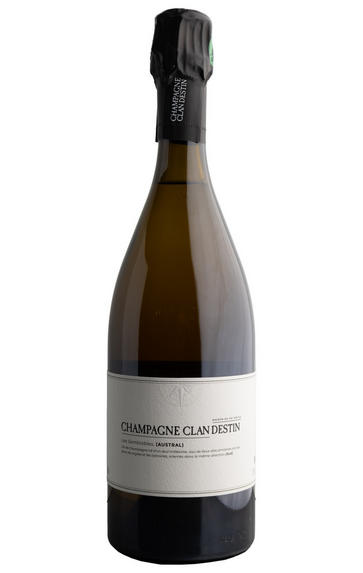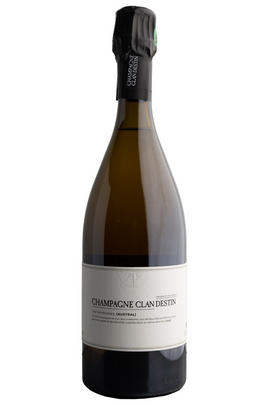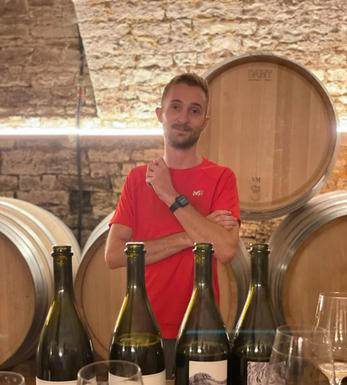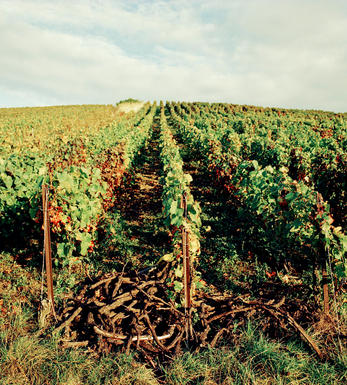
2019 Champagne Clandestin, Austral, Brut Nature

About this WINE

Champagne Clandestin
Champagne Clandestin is a joint project from Bertrand Gautherot, of Vouette et Sorbée fame, and Benoît Doussot – a Burgundian winemaker specialising in Meursault. Together, they started Clandestin: a micro-négociant which buys sustainably-grown grapes from just 8 hectares, and creates the most terroir-expressive Champagnes imaginable.
This duo are producing limited quantities of fantastic wines, all hand-picked and farmed both organically and biodynamically. The name “clandestine” comes from the French for “hidden” and alludes to the 8 hectares of land they focus on. These historically overlooked parcels of north and west-facing vineyards, nestled above the town of Buxières, produce grapes of outstanding quality.
Each cuvée comes from a particular sun exposure: as the names suggest, Austral’s Pinot Noir grapes come from the south-facing vineyards, while Boreal’s come from the north. This is a Champagne producer whose passion is respectful viticulture and terroir expression, creating wines ideal for Champagne purists who value minerality, cut, and precision.

Blanc de Noirs
Blanc de Noirs describes a wine produced entirely from black grapes. In Champagne, Blanc de Noirs cuvée can be made from the two black grapes permitted within the appellation, Pinot Noir and Pinot Meunier. Bollinger's prestige cuvée Vieilles Vignes Françaises, from ungrafted, old Pinot Noir vines, has set the yardstick in a style that is now produced by a number of other Champagne houses.
A typical Blanc de Noirs cuvée has a deep golden colour, and can be more intensely flavoured than the classic non-vintage, multi-grape blend.Recommended Producers: Cedric Bouchard, Bollinger

Pinot Noir
Pinot Noir is probably the most frustrating, and at times infuriating, wine grape in the world. However when it is successful, it can produce some of the most sublime wines known to man. This thin-skinned grape which grows in small, tight bunches performs well on well-drained, deepish limestone based subsoils as are found on Burgundy's Côte d'Or.
Pinot Noir is more susceptible than other varieties to over cropping - concentration and varietal character disappear rapidly if yields are excessive and yields as little as 25hl/ha are the norm for some climats of the Côte d`Or.
Because of the thinness of the skins, Pinot Noir wines are lighter in colour, body and tannins. However the best wines have grip, complexity and an intensity of fruit seldom found in wine from other grapes. Young Pinot Noir can smell almost sweet, redolent with freshly crushed raspberries, cherries and redcurrants. When mature, the best wines develop a sensuous, silky mouth feel with the fruit flavours deepening and gamey "sous-bois" nuances emerging.
The best examples are still found in Burgundy, although Pinot Noir`s key role in Champagne should not be forgotten. It is grown throughout the world with notable success in the Carneros and Russian River Valley districts of California, and the Martinborough and Central Otago regions of New Zealand.


Buying options
Add to wishlist
Description
The Austral Brut Nature Blanc de Noirs, grown from Champagne Clandestin’s south-facing vineyards in Buxières, has a lively energy and astonishing concentration. There’s a complexity here that demands to be taken seriously, with the nose boasting generous aromas of wild strawberry and lychee.
On the palate, these balance well with a zesty acidity, a creamy mousse and a fresh limestone-mineral finish. Although open and inviting now, this will continue to be enjoyable for the next decade or so.
Davy Żyw, Senior Buyer, Berry Bros. & Rudd (September 2023)
wine at a glance
Delivery and quality guarantee